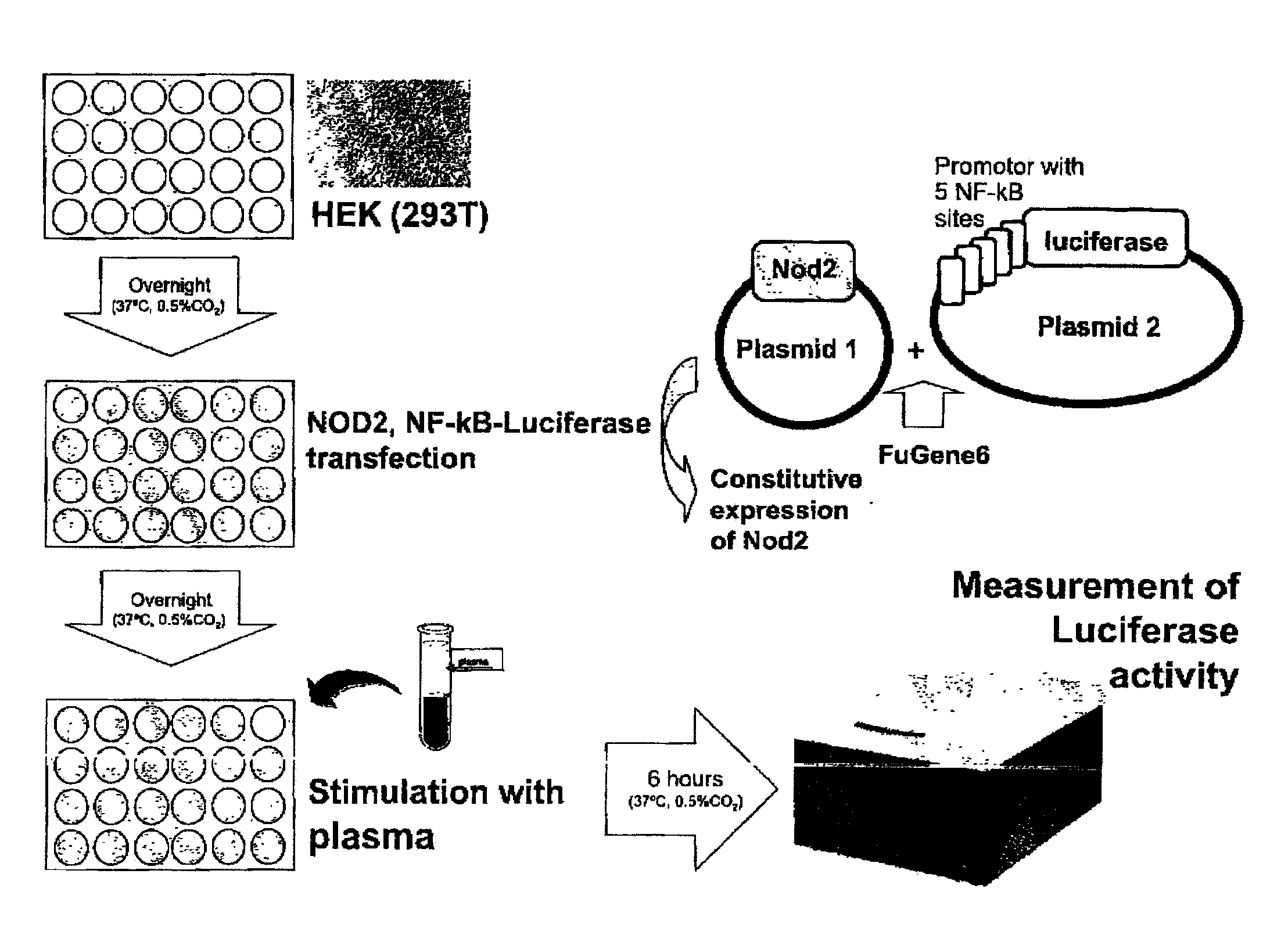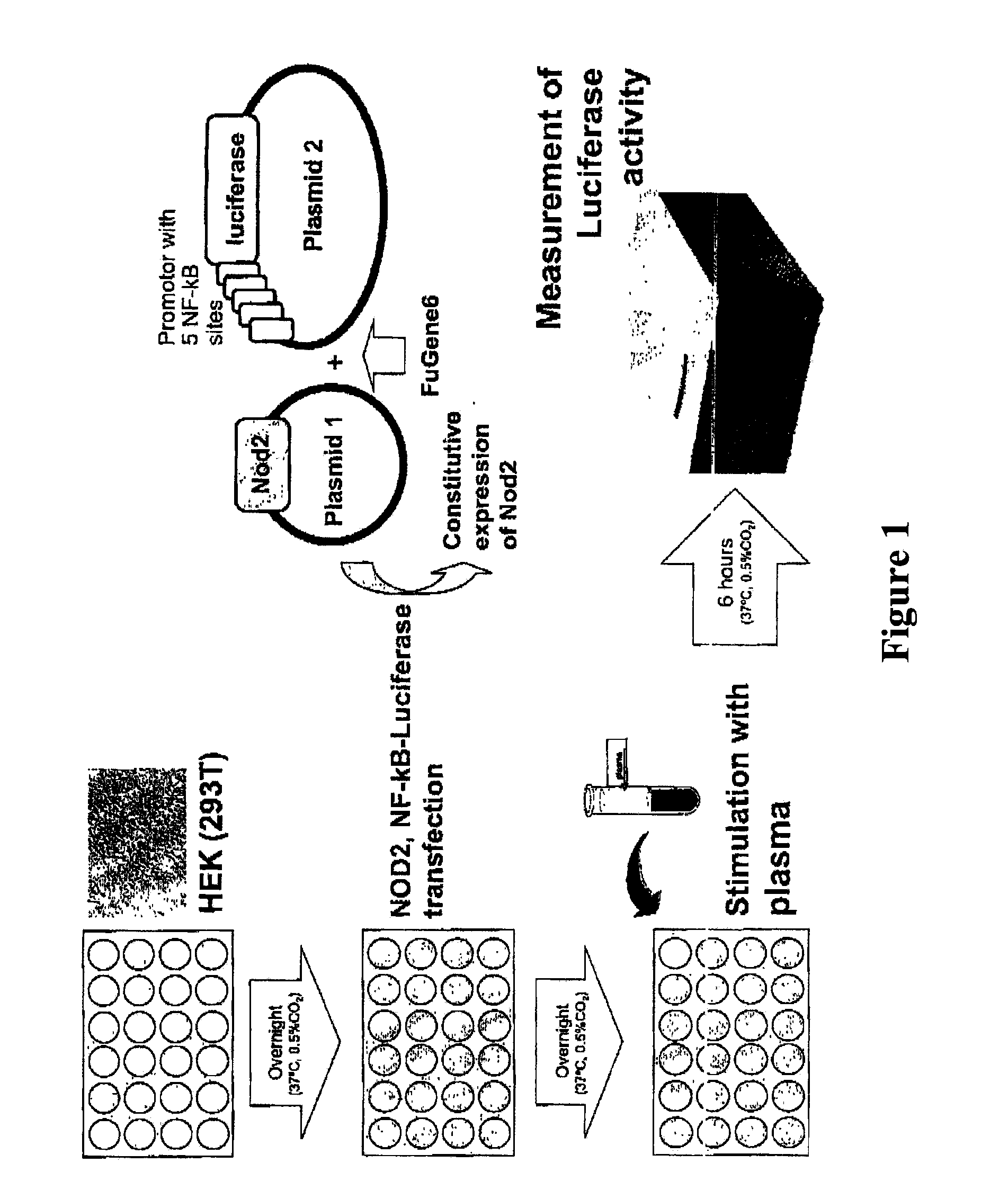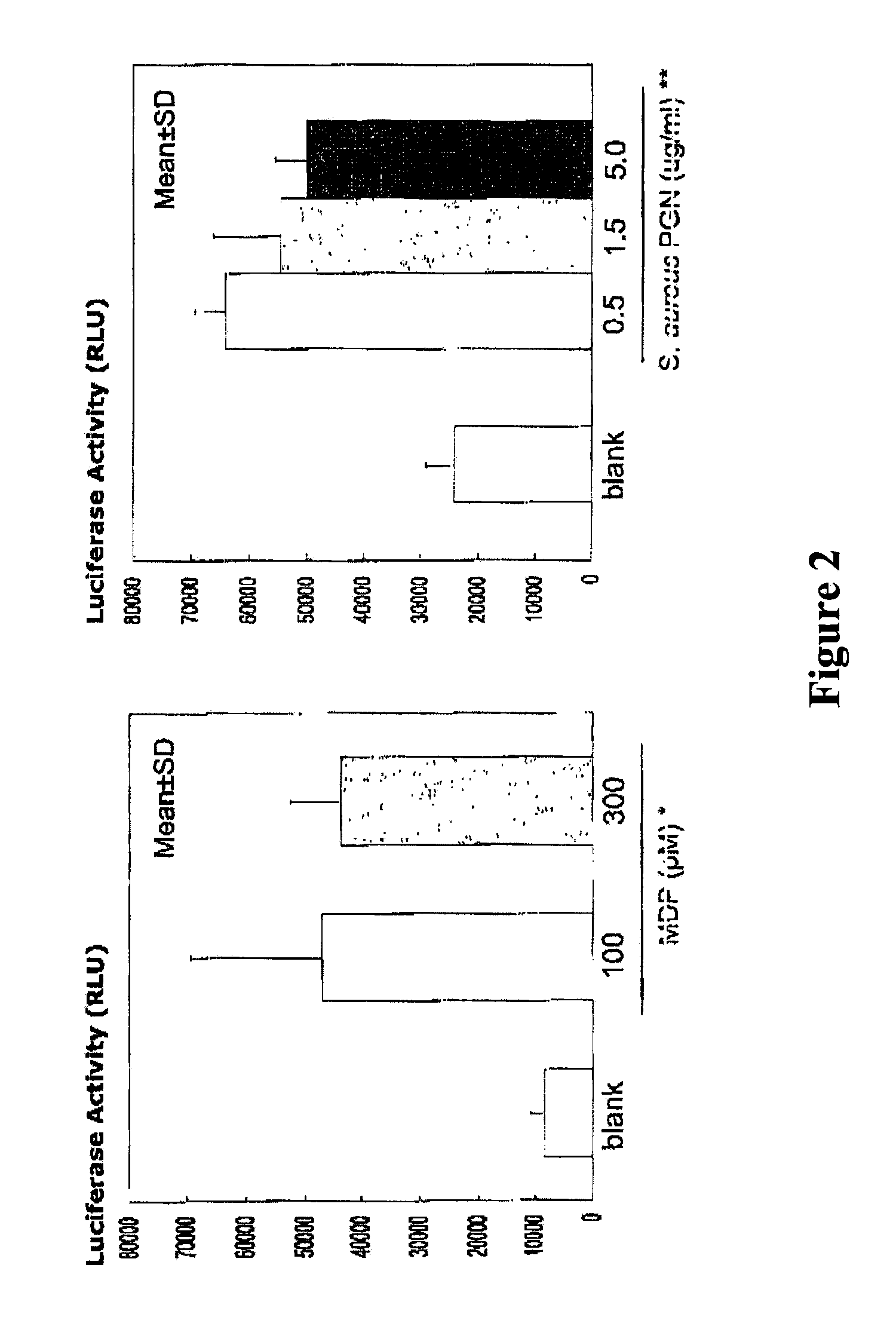Detection of bacterial peptidoglycan-like compounds
- Summary
- Abstract
- Description
- Claims
- Application Information
AI Technical Summary
Benefits of technology
Problems solved by technology
Method used
Image
Examples
example 1
Reporter Assay for NF-κB Activation
[0074]Human embryonic kidney HEK293T cells (American Type Culture Collection (“ATCC,”) Manassas, Va., USA) were cultured in Dulbecco's modified Eagle's medium (Invitrogen, Carlsbad, Calif., USA) supplemented with 10% fetal calf serum (“FCS”) (PAA Laboratories GmbH, Pasching, Austria). HEK293T cells were seeded into 24 well cell culture plates at a density of 105 cells / ml (500 μl / well) and transfected with various expression plasmids, as previously described (Girardin 2003a) (FIG. 1).
[0075]Transfection was performed as described by Girardin et al., 2003a. HEK293T cells were transfected overnight using 1% FuGENE 6 transfection reagent (Roche Diagnostics, Mannheim, Germany) with 75 ng of the reporter plasmid pNF-kB-Luc (Stratagene, La Jolla, Calif. USA) and 1 ng p-UNO-hNODt (InvivoGen, San Diego, Calif. USA) or fsNOD2 expression plasmids (Begue et al. (2006); Chamaillard et al. (2003)). The plasmid pNF-κB-Luc is a 5.7 kb cis-reporting pNF-κB-Luc plasm...
example 2
NF-κB Activation Stimulated with Plasma from Septic Patients
[0080]HEK293T cells co-transfected with the pNF-κB-Luc and pUNO-hNOD2 plasmids were assayed for luciferase expression in the presence of plasma from healthy donors and plasma from donors suffering from sepsis. FIG. 5 shows that 300 pM MDP induced NF-κB activation. Plasma samples from four patients with sepsis, S06-S09, were compared to plasma samples from two healthy donors, D04-D05. Three of the four septic samples, but neither of the normal samples, activated NF-κB to at least about the same extent as MDP, demonstrating that the assay can differentiate the plasma of patients with a bacterial infection from the plasma of healthy donors.
[0081]FIG. 6 demonstrates the specificity of the assay when detecting peptidoglycans from septic patients. Transfected NOD2, but not the frameshifted mutant, induced luciferase expression in cells co-transfected with pNF-κB-Luc.
[0082]Reporter assays of the invention can be standardized to de...
example 3
NF-κB Activation Stimulated with Plasma from Surgical Patients
[0084]Human plasma samples from thirteen patients undergoing abdominal aortic surgery were obtained from the surgical team of Hôpital de la Pitié-Salpêtrière. Blood samples were taken prior to the induction of anesthesia, prior to incision, prior to clamping, following reperfusion, on day 1 post-surgery, and on day 2 post-surgery. In this precise clinical setting, each patient served as its own control.
[0085]The bacterial translocation that occurs during surgery was detected by the luciferase assay of the invention. Luciferase expression began to rise following anesthesia and prior to incision; this increase may reflect an effect of anesthetic drugs on gastrointestinal motility and subsequent bacterial translocation. Luciferase expression rose further following incision and prior to aortic clamping, reflecting the bacterial translocation resulting from manipulation of the intestines by the surgical team. Luciferase expres...
PUM
| Property | Measurement | Unit |
|---|---|---|
| Solubilizing | aaaaa | aaaaa |
Abstract
Description
Claims
Application Information
 Login to view more
Login to view more - R&D Engineer
- R&D Manager
- IP Professional
- Industry Leading Data Capabilities
- Powerful AI technology
- Patent DNA Extraction
Browse by: Latest US Patents, China's latest patents, Technical Efficacy Thesaurus, Application Domain, Technology Topic.
© 2024 PatSnap. All rights reserved.Legal|Privacy policy|Modern Slavery Act Transparency Statement|Sitemap



